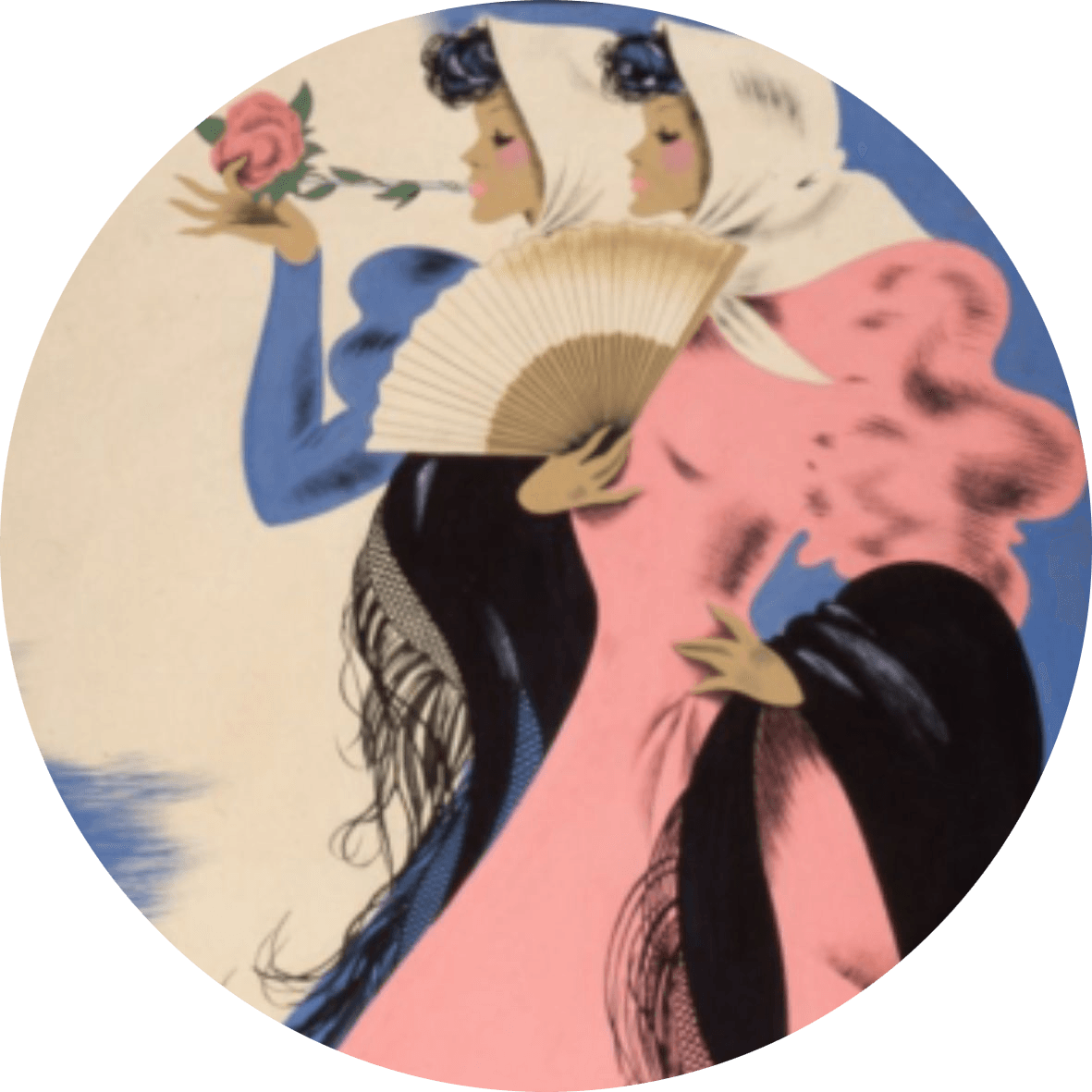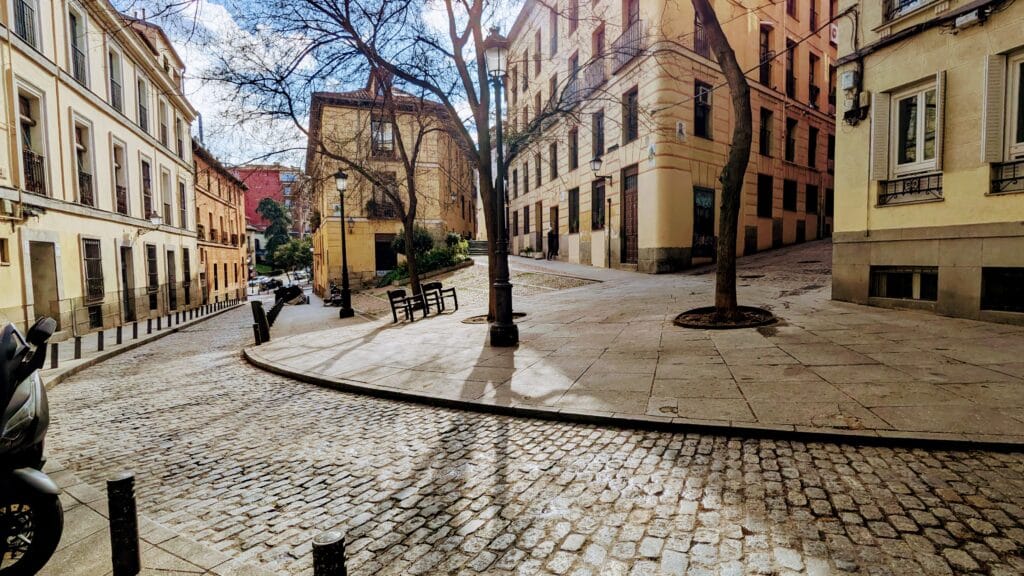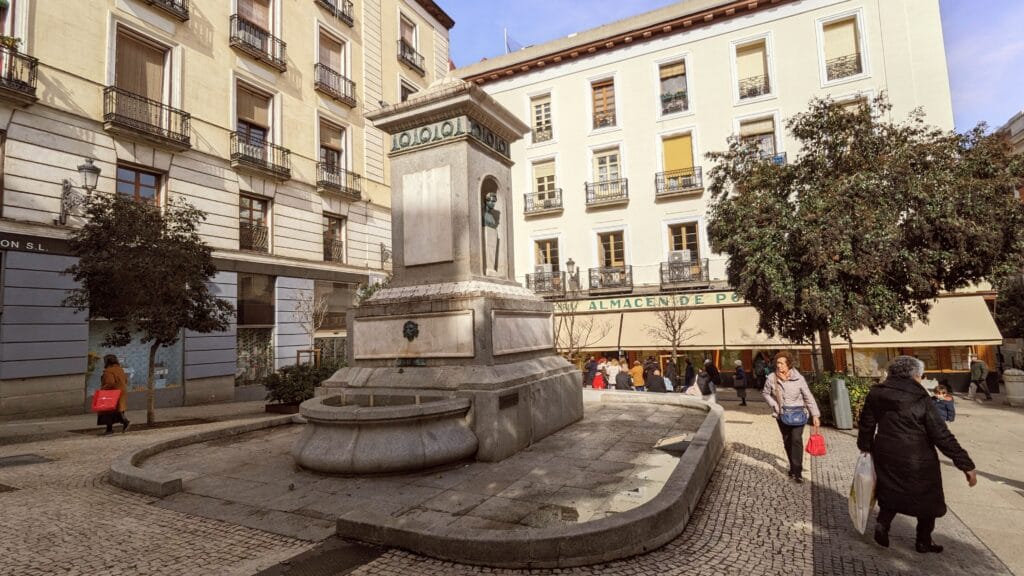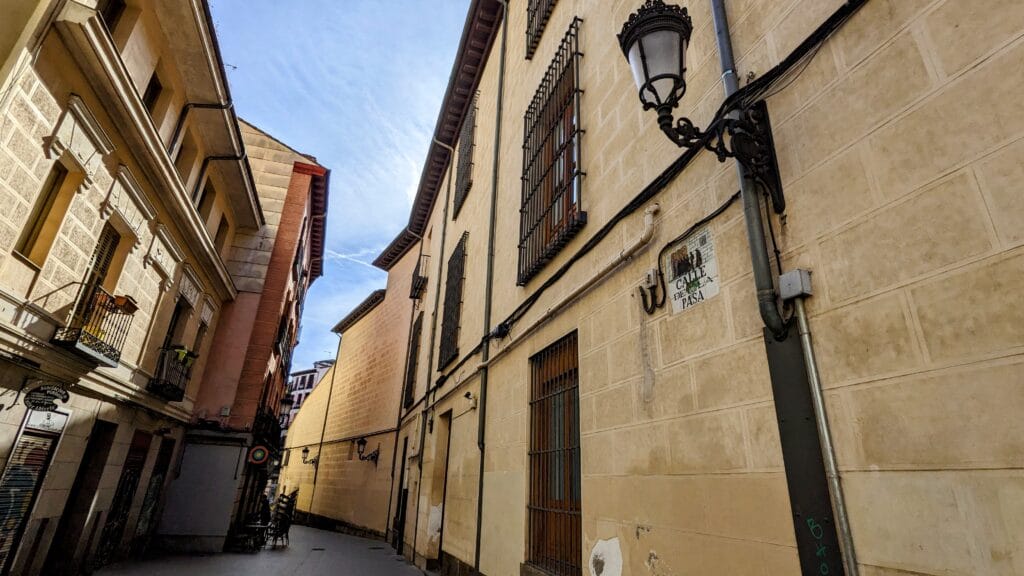In the heart of old Madrid and yet a world apart from the touristy mayhem surrounding the royal palace, La Latina is the perfect place to base a stay in the city. For me, the steeply sloping squares and cobbled streets of the barrio (neighbourhood) offer a tranquil retreat into historic Madrid. By contrast, the bustling Cava Baja and in Mercado de Cebada in the upper section are a foodie heaven. A little bit more grown-up than Malasaña and Lavapiés, it has a sophisticated, traditional vibe that’s hard to beat, delivering the perfect mix for a delightful stay.
The Fascinating History of La Latina
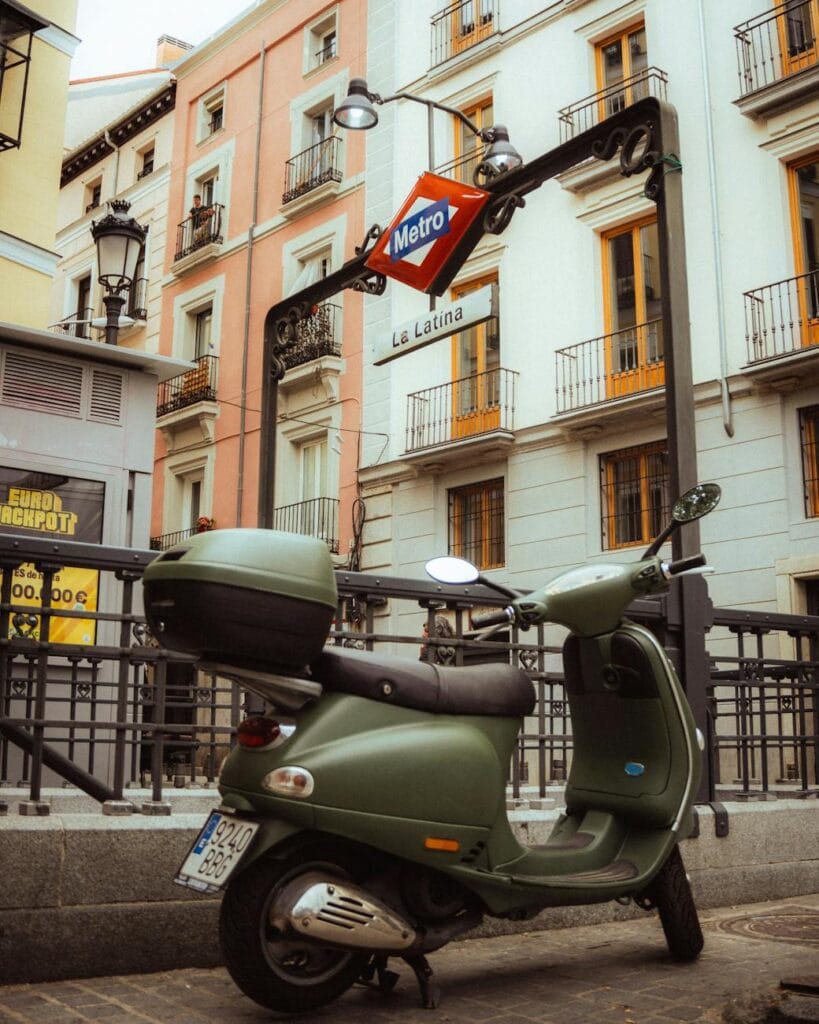
La Latina’s history begins with Madrid’s unique foundation as the only European capital established by a Muslim ruler. When Mohammed I of Córdoba founded the settlement in the 9th century, it served as a garrison town protecting Toledo. After Alfonso VI of Castile conquered the Muslim settlement in the 11th century, the Muslim population was moved outside the city walls to an area known as the “Morería” – the foundation of what would later become La Latina.
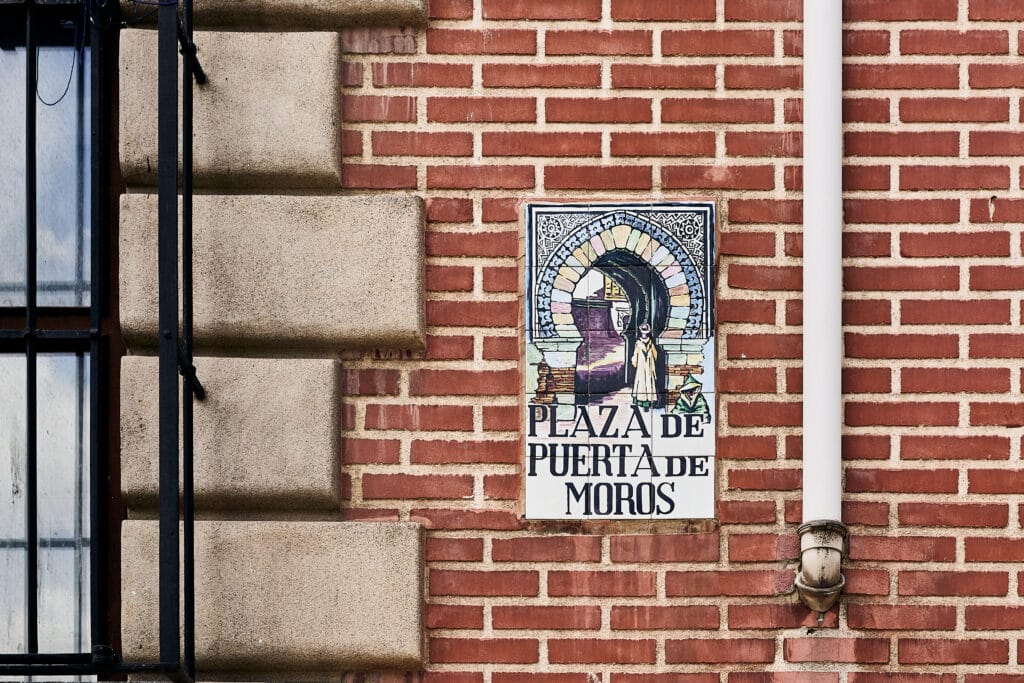
This Muslim heritage is preserved in street names like Calle de la Morería and Plaza de Puerta de Moros – which marks where the gate to the Morería once stood. The neighbourhood’s current name, however, comes from Beatriz Galindo, nicknamed “La Latina” due to her extraordinary knowledge of Latin. This young genius then served as tutor to Queen Isabella’s children, including Catherine of Aragon and Juana “the Mad.” After marrying a wealthy nobleman, she founded a hospital in the area, which eventually gave the neighbourhood its modern name.
The area’s medieval character is still evident in its layout, with narrow winding streets following the contours of Madrid’s hills. If you’re visiting and you want to uncover this side of La Latina, you can buy my Voicemap guide to Medieval Madrid, which starts by the palace before going on to explore La Latina.
The Unique Ambience of La Latina
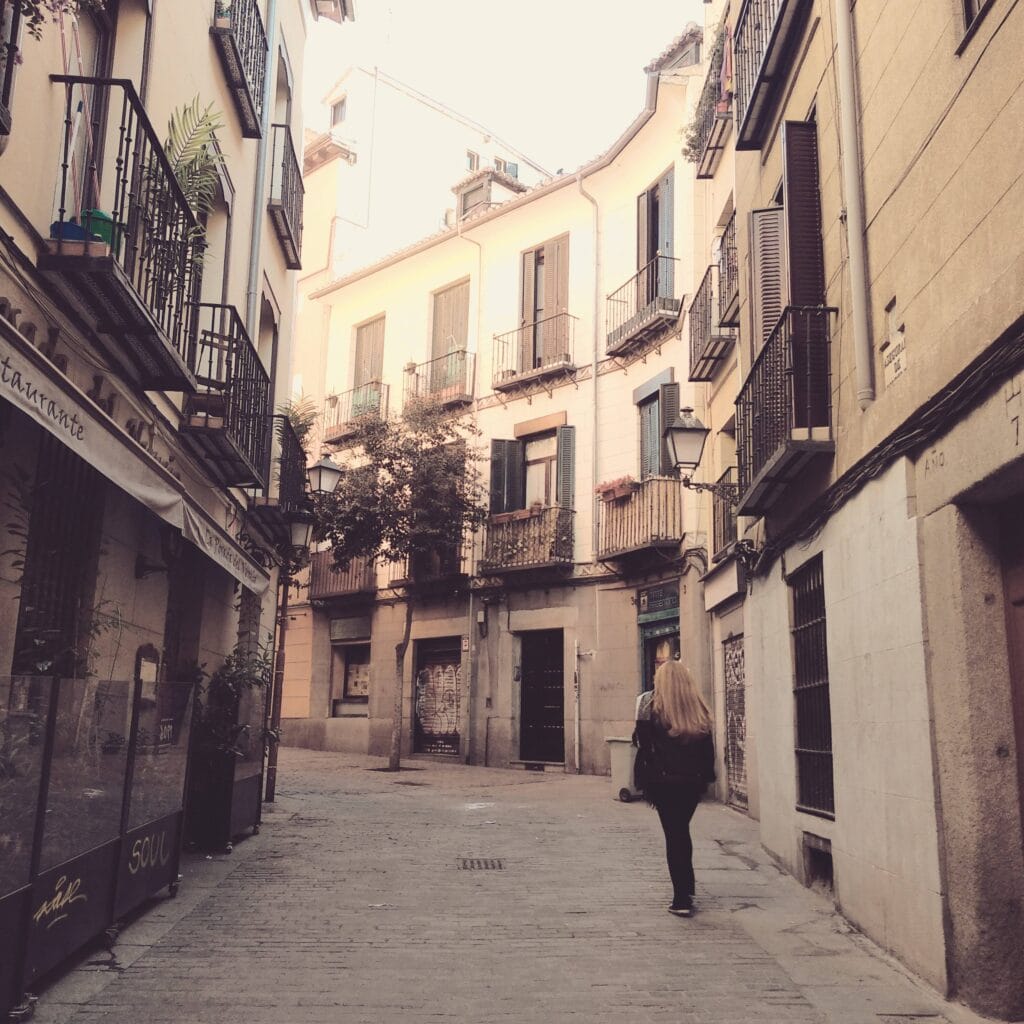
Today’s La Latina has a distinct character that sets it apart from other Madrid neighbourhoods. Once the prime destination for Madrid’s younger crowd, the area has matured as younger revellers migrated to Malasaña. Now, La Latina attracts a slightly older, more sophisticated clientele – people who appreciate good food, quality drinks, and atmospheric surroundings without the frenetic energy of youth-oriented districts.
The neighbourhood strikes a perfect balance between lively and laid-back. During daylight hours, you’ll find locals and visitors alike enjoying leisurely meals in picturesque plazas, while evenings bring a relaxed yet lively energy to the tapas bars and wine establishments lining the streets. The architecture adds to this special ambience, with medieval structures, 19th-century inns – some traditional “corrala” buildings (apartments built around central courtyards – creating a visually fascinating urban landscape.
Must-See Attractions in La Latina

La Latina offers numerous attractions that history and culture enthusiasts shouldn’t miss:
- Basilica de San Francisco el Grande: Boasting the second-largest cupola in Europe, this spectacular church features romantic paintings and a chapel by Goya, where the artist included himself in the artwork.
- Museo de San Isidro: This free museum is an absolute treasure, offering insights into Muslim Madrid and displaying artefacts related to the city’s patron saint, San Isidro. Here you can also find the grave of Beatriz Galindo (La Latina), who gave the neighbourhood its name.
- San Pedro el Real: A church with a 14th century redbrick mudéjar tower that reflects the roots of Madrid’s Morería.
- Plaza de la Paja: Once where locals brought straw (paja) to feed the bishop’s horses as a form of church tax, this beautiful square is now one of Madrid’s most charming spots.
- Jardín del Príncipe de Anglona: At the bottom of the Plaza de la Paja, this hidden garden offers beautiful views of the rooftops of old Madrid.
- Cava Baja: This street follows the route of the medieval wall and is lined with 19th-century inns (posadas) that often display excavated segments of the old Christian wall beneath glass floors.
- The Viaduct: Crossing from the cathedral area to La Latina, this high viaduct offers spectacular views of the mountains to the north and the cathedral, palace, and Casa de Campo to the west.
- Jardin de las Vistillas: The garden of the views does what it says on the tin and then some, offering spectacular views of the cathedral and the Guadarrama Mountains.
- Casa a la Malicia: Located at Calle Redondilla 10, this pink “trick house” features oddly positioned windows – a clever architectural response to Philip II’s requirement that citizens provide accommodation for nobles.
- Desperate Literature: A brand new arrival in the area but a Madrid institution (they just moved here from near Opera), this splendid bookshop is located on Cava Baja.
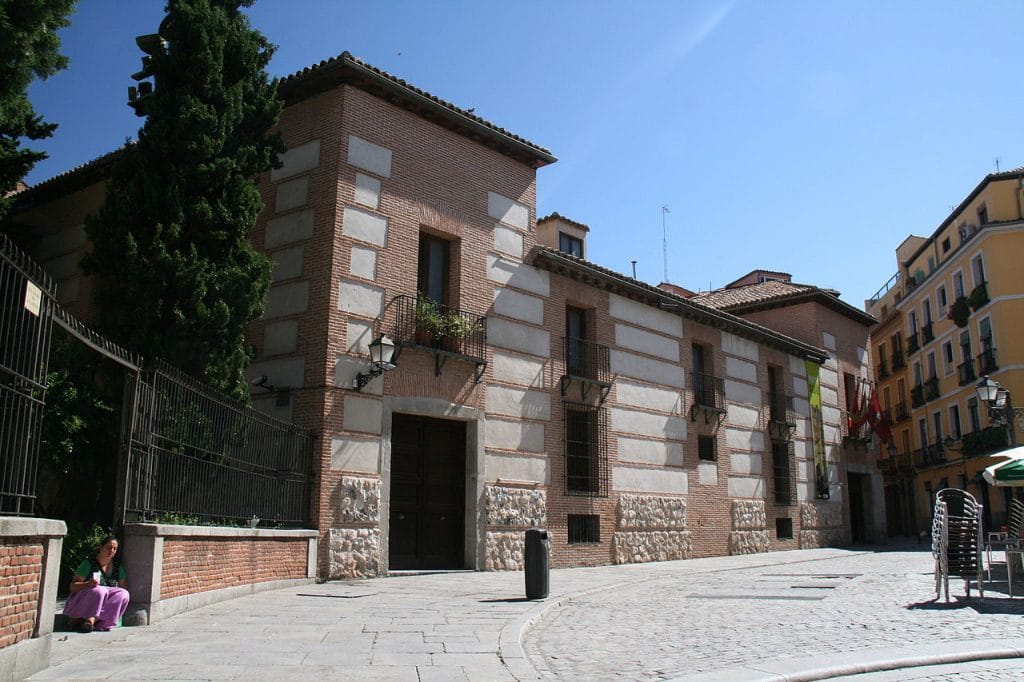
Where to Eat and Drink
La Latina is a paradise for food and drink lovers, offering some of Madrid’s most authentic culinary experiences:
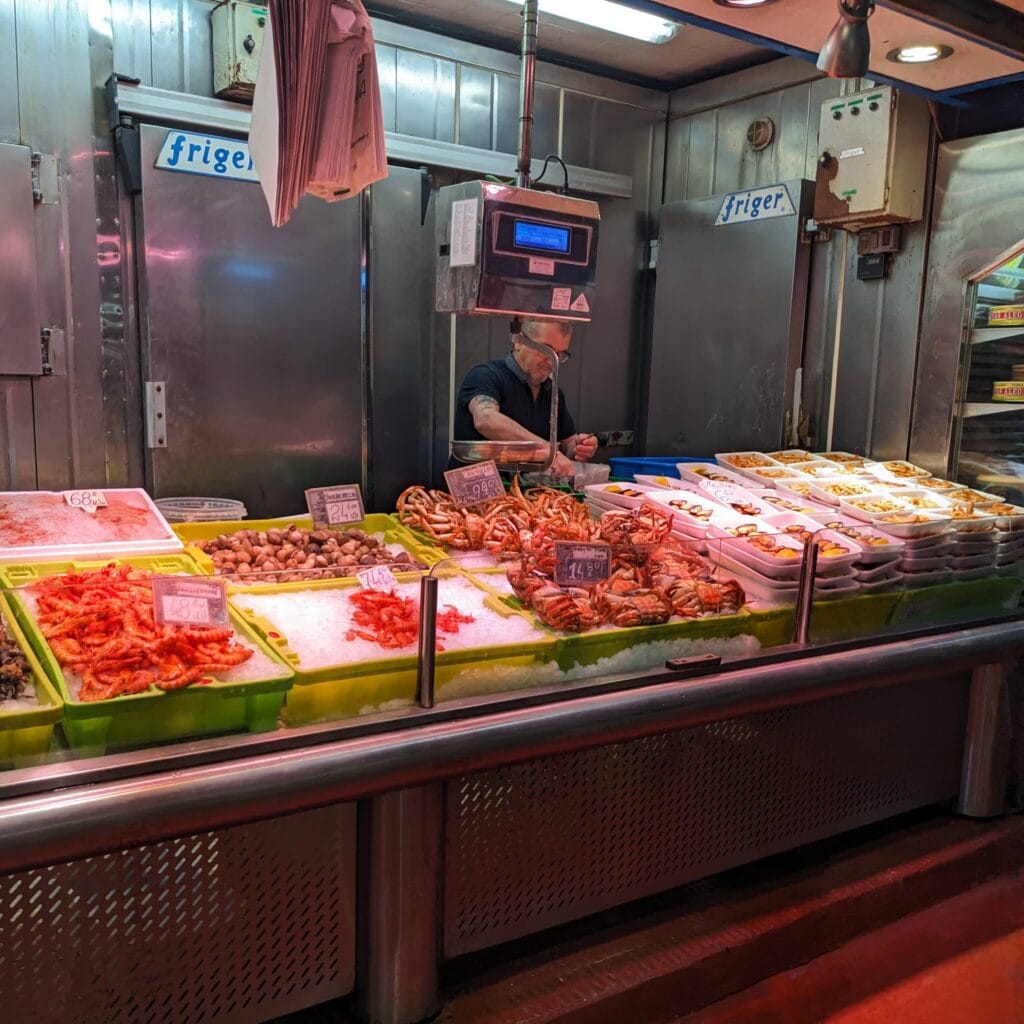
- Mercado de la Cebada: This covered market transforms on weekends as locals flock here for fresh seafood feasts. From around 11:30 AM, you can purchase prawns or pulpo (octopus) on polystyrene trays and enjoy them with beer while seated on crates – a quintessential Madrid experience.
- Cava Baja: This street is lined with traditional taverns and restaurants, making it the buzzing culinary centre of La Latina. Many establishments here serve regional specialities from across Spain.
- La Musa Latina: Located on Plaza de la Paja, it’s perfect for breakfast with croissants and café con leche in a picturesque setting. It’s equally delightful in the evening and boasts what I believe are “the most beautiful toilets in Madrid” – toilets are a bit of an issue in the city, so for me, this is a delightful surprise!
- Taberna Tempranillo: This beautiful old wine bar features walls covered in wine bottles, specializing in selections from the Comunidad de Madrid region. They offer generous free tapas with your drinks, including sometimes luxurious options like partridge.
- Traditional Posadas: Historic inns like Posada del Dragón and Posada León de Oro offer meals in atmospheric settings, both have sections of the old medieval wall covered in glass on the floor.
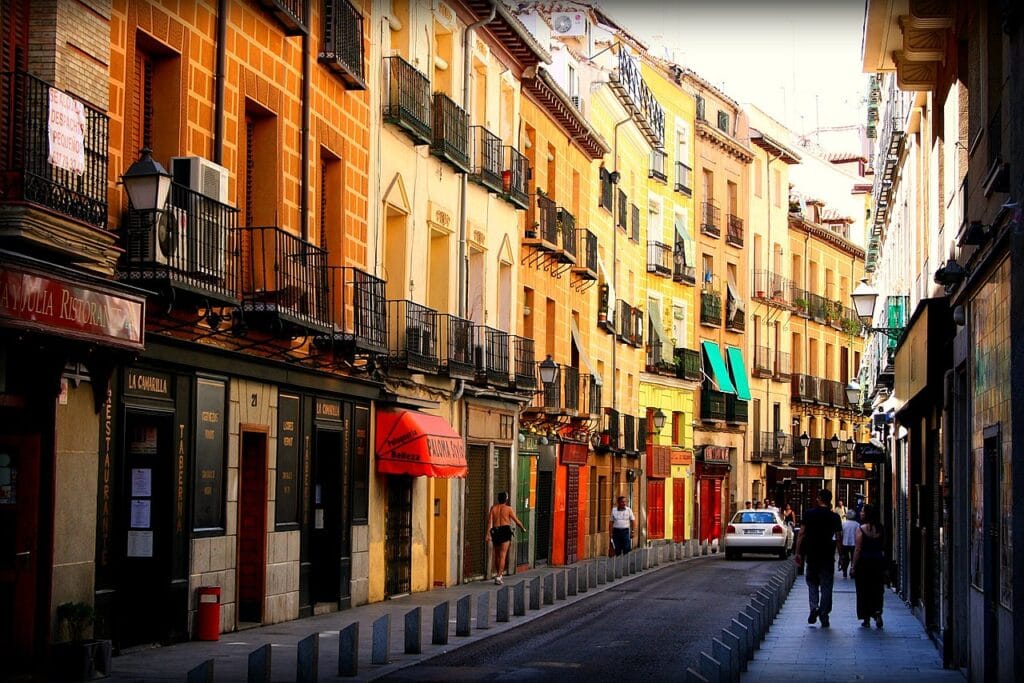
Where to Stay
For accommodation that places you in the heart of La Latina’s charm:
- Posada del Dragón: This historic inn combines authentic character with modern amenities. Its interior corrala creates a unique architectural experience that connects you to Madrid’s past.
- Posada León de Oro: Another historic inn offering comfortable rooms in a building steeped in history, with remnants of medieval walls visible beneath glass floors.
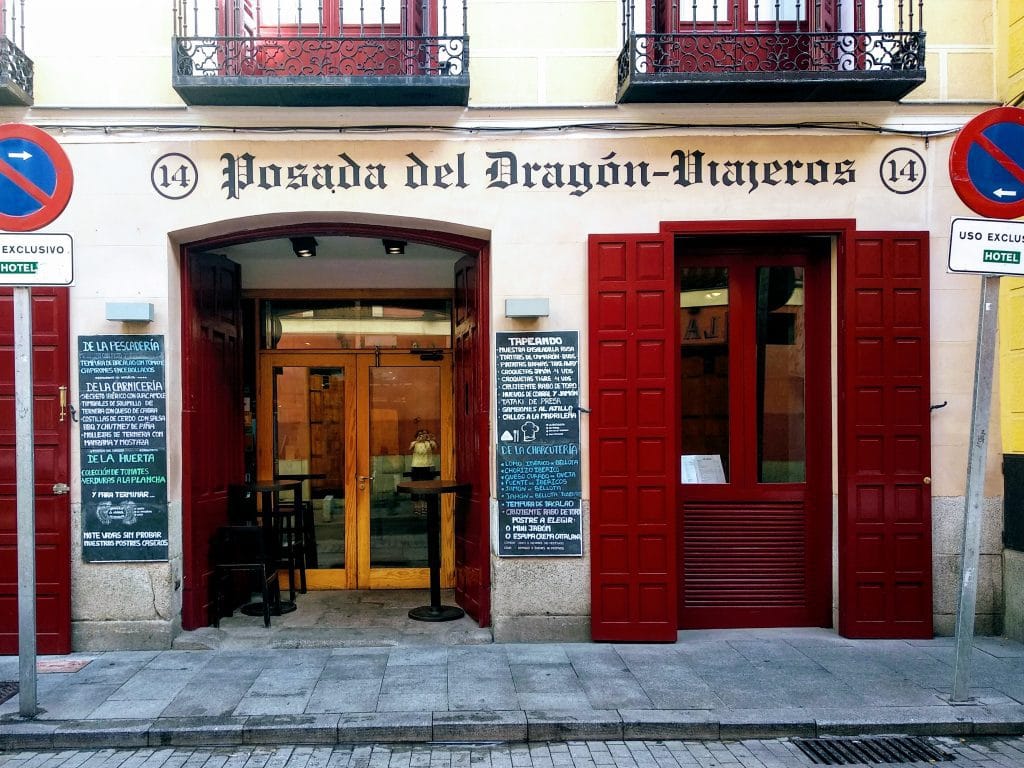
La Latina is particularly recommended for mature travellers who appreciate history, authentic local culture, and a sophisticated yet relaxed atmosphere. The neighbourhood’s central location makes it perfect for exploring the rest of Madrid while providing a fascinating base with plenty to discover within its own borders.
Whether you’re sampling seafood at Mercado de la Cebada, sipping wine at Taberna Tempranillo, or simply wandering the medieval streets, La Latina offers an experience of Madrid that can’t be beat.
Want to discover a different side to the city? Then why not get a copy of my new book, Quiet Madrid, that offers a unique insight into the quiet spaces and tranquil places Spain’s capital has to offer.
